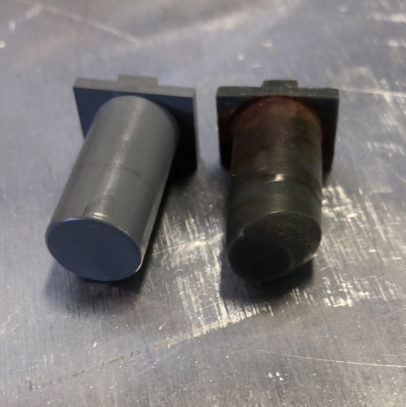Plastic Machining for Prototype Models
Could plastic be the right material for your next prototype model?
There’s a lot of talk about machining metals in manufacturing, but certain plastics can be excellent choices for prototype to low volume production needs.
Some clients use plastic to prove out a concept prior to injection molding, while others leverage plastic machining for short-run production (up to about 50 units per year).
At KAD, we regularly machine plastic using our 5-axis machining capabilities, but a certain level of skill is required to overcome the machining challenges that are specific to these materials. Fortunately, our team is up to the task!
The Challenges of Machining Plastics
Holding tolerances on plastic prototype models is generally more difficult than it is for most metals. Here’s why:
- Absorption. Ambient temperatures and machine moisture produce significant changes in plastics during the machining process, which can make it difficult to maintain tolerances. Depending on the type of plastic and applied coolant, some plastics expand as they absorb water, then shrink as they dry out. Nylon, for instance, has a 3% absorption rate that is important to account for during part design and machining.
- Clarity. Plastic stock varies considerably, so it’s important for clients to clarify (haha) if they need a panel to be transparent. It’s possible to polish plastic to achieve optical clarity, but that process can affect the tolerances for a part, so we’ll need to account for any dimensional changes in advance.
- Thickness. Plastics are only available in metric units (millimeters), which conflicts with the imperial system of units (inches) that we’re accustomed to here in the US. If you were to design tolerances for .25” acrylic, the closest measurement you’d receive would be 6 mm acrylic +/- 10% of the thickness. That inches-to-millimeters conversion results in a difference of .35 mm, meaning that you’d be working with an undersized design from the very start. That conversion must be taken into account when sourcing material.
Common Plastic Materials
There’s a seemingly endless variety of plastics to choose from, each one offering unique benefits for prototype CNC machining:
- Nylon. Also known as polyamide, nylon is known for its incredible strength, ability to withstand extreme temperatures, and impressive chemical resistance.
- Acrylic. This transparent plastic is extremely rigid and technically bulletproof when thick enough. We like to say acrylic is the carbide of plastics.
- Polycarbonate. Polycarbonate is one of the strongest plastics available. It’s also known for having good memory properties, meaning that it’s capable of returning to its original shape when certain stimuli are applied.
- Delrin. Due to its high stability, Delrin is the go-to material for parts requiring tight tolerances. However, this material is sensitive to heat at or above 250 °F.
- Acrylonitrile butadiene styrene (ABS). With its low melting point, ABS is easy to use for injection molding, making it an economical option for production manufacturing.
- Ultra High Molecular Weight (UHMW). This hard, slippery plastic has incredible wear-resistant properties that make it an ideal material choice for many applications. UHMW is so durable that it’s known for extending equipment life and minimizing maintenance costs.
- Polypropylene. Polypropylene is a soft, flexible material with a low melt point, making it challenging to machine—but certainly not impossible for the expert machinists at KAD!
The plastic that will work best for your prototype model depends on the part’s end-use application. For instance, if your plastic prototype model is intended for medical or electric applications, you may want to select materials like polyether ether ketone (PEEK), which has natural lubricity, or Torlon, which has strong thermal insulation abilities.
It’s also possible to customize a finishing operation for a plastic prototype model, much like you would with a metal part. The most common plastic finishing processes are media blasting (for a matte finish) and vapor/mechanical polishing (to improve the optical quality of clear plastics). We can also paint and plate plastics for aesthetic purposes.
Keep in mind that just because it’s plastic doesn’t mean it’s cheap. In some cases, aluminum may be a more cost-effective alternative for your prototype. Our team can answer any question you may have around material selection that delivers on both performance and price.
Getting excited about all the possibilities of CNC machining with plastic? It could be the solution you’ve been waiting for! Request a quote for your next prototype model and we’ll help you select the right plastic or metal material for your part.



